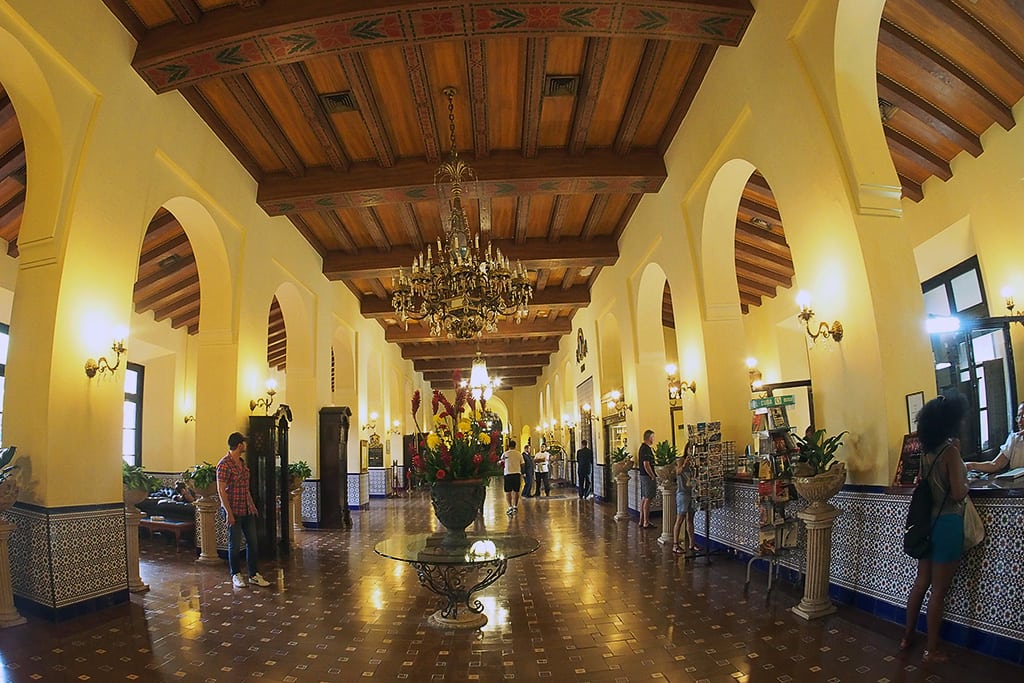The Only Thing to Stop Cuba's Tourism Growth Is Its Accommodations Crunch

Skift Take
As Cuba's visitor numbers continue to soar the accommodation crisis in many parts of the island is acute.
Few new hotels are coming online and the tourism boom shows no signs of slowing down. Scheduled direct flights from the United States to the island begin with a JetBlue flight at the end of the month and more will launch this fall, bringing even more travelers to the island nation.
The stats tell the story. A total of 2,147,600 travelers visited the island in the first six months of 2016, an 11.7 percent rise on the same period in 2015. In 2015 the total number of visitors to Cuba was 3,524,779 compared to 3,002,745 in 2014, a 17 percent increase. Last year some 161,233 Americans traveled to Cuba compared to just 63,046 in 2010, a 156 percent increase in five years, making American visitors the fourth largest group of arrivals last year after Canadians, Cubans living abroad, and Germans.
This surge in American travel Cuba relates to the December 2014 detente between the United States and its old Cold War foe. In early 2015, President Barack Obama relaxed the OFAC travel rules to Cuba for American citizens permitting travel in 12 categories under a general license; this was further relaxed in March 2016 before his historic visit to the island: individual travelers can now self-certify and plan their own educational, people-to-people visits to the island.
The Tour Crunch
But where are all these visitors staying? According to Cuban statistics, the overwhelming majority of visitors (3,446,288) stayed in hotels on the island in 2015 with Cuba reporting it had 66,389 rooms (excluding the burgeoning private sector).
Tour operators are reporting that hotel prices are doubling as the squeeze on capacity continues. Sergio García-González, Head of Marketing for the UK's Cuba Holidays told Skift: "Some hotels have doubled and others have tripled their room rates this year, especially in Havana. Increases are most notable in popular top quality hotels like Parque Central, Saratoga, and Nacional de Cuba. Other hotels, not as popular but consistently good and also with a five-star rating, like Melia Habana and Melia Cohiba, have also pushed up their prices."
The madness of Havana hotel pricing can be seen in a 'Havana Getaway' marketed by InsightCuba in the U.S. which is offering three nights and breakfast for two people at the Melia Cohiba with airfare and legal People-to-People activities in November for a staggering $5,080.
Chase Poffenberger, Executive Vice President of Academic Travel Abroad (ATA) which will have arranged 65 people-to-people and cultural delegations to Cuba by the end of this year, said: "The surge in American travelers, coupled with the slow roll out of new hotel inventory, continues to put pressure on existing hotels and contributes to overall price increases."
"As a tour operator, we publish our tour prices 12-18 months in advance, even though price increases in Cuba are announced much closer to a group's arrival. Therefore, we must carefully estimate any increases. With only a very few exceptions, ATA's hotel partners have honored our reservations in Havana and Cienfuegos throughout a very busy season."
The Water Option
With the squeeze showing no signs of abating, travelers and operators on both sides of the Atlantic are looking at alternatives. For one, the trend for cruising is gaining popularity. A recent report revealed 53,748 travelers arrived by cruise ship in the first quarter of this year some 40,751 more than in the same period last year. In 2013 a mere 1,883 cruise visitors docked in Cuba.
Cruising Cuba offers an alternative way of seeing the island without worrying about hotel rooms. The New York Times Journeys to Cuba will use French company Ponant for its first OFAC-compliant cruise in March 2017 at $10,975 for 11 days. For non-U.S. citizens, Star Clippers offers two routes around the island. Star Clippers had initially offered hotel stays bookending its 2016 trips but has abandoned the offer of hotel stays either side of its sailings due to the difficulty of finding rooms, its spokesperson said. Carnival Corp.'s new Fathom line, which began sailing in May, offers two peer-to-peer compliant, seven-day cruises a month out of Miami, visiting Havana, Cienfuegos, and Santiago de Cuba. Non-discounted prices start at $2,320.
Cruising isn't the only floating option: GetMyBoat, the Airbnb for boats, has 35 boats listed in Cuba and renewed its outreach there this month, its spokesman said. A cruising catamaran for 7 nights (the minimum rental) is $3,770 including the service fee and it sleeps 12; a houseboat in Marina Hemingway costs $115 a night.
Paul Madden, owner of Cuba Yacht, the only yacht owner with an OFAC license for legal travel to Cuba by U.S. citizens, is directing clients away from Havana to the rest of the island. He is on the verge of launching all-inclusive pricing for yacht trips to Cuba, which comply with U.S. law, from $12,000 for 6-8 guests for a week. His move echoes ATA's stance. Chase Poffenberger explained: "We are working to develop more authentic, people-to-people experiences in Eastern Cuba where the hotel overbooking issue is not as acute." For the first time, Smithsonian Journeys, in association with ATA, will offer a people-to-people Eastern Cuba trip in 2017.
The Private Option
The biggest beneficiary of Cuba's tourism boom has been the private sector. Cuba's homeowners, who offer bed and breakfast in everything from a colonial mansion in Trinidad to a 1950s apartment in Havana, are riding the tourism surge and offering a service that many lower class hotels in Cuba can't and don't match.
Tour operators that formerly could not incorporate B&Bs into itineraries are now offering this kind of accommodation to travelers. García-González of Cuba Holidays explained: "We are increasingly recommending casas particulares to many of our clients especially those looking to experience 'the real Cuba.' We believe casas particulares in Cuba have greatly improved in terms of variety of choice, quality standards and level of service, and as such they are now in a position to compete with major hotels in Cuba."
Aiding the uptick in B&B bookings is Airbnb which came online in Cuba in April 2015 for U.S. citizens with 1000 listings. Last year, it reported 13,000 U.S. visitors stayed across 4,000 Cuban casas; it currently reports more than 7,500 listings in Havana alone, a jump by 3,500 lodgings since Airbnb was able to start selling Cuba to the rest of the world in April 2016.
Aiming for a smooth vacation? Book well in advance. García-González recommends at least two months: "Last minute availability in the larger beach resorts — Varadero, Cayo Santa María, etc. — is still possible but virtually non-existent in Havana at the moment."
Travelers might also want to think outside of the box. There are various campismos in Cuba — these are inexpensive sites with concrete cabañas (not campsites for tents; wild camping is not legally permitted in Cuba). Not all accept international travelers but some of those that do are fairly developed like the Aguas Claras on the edge of Pinar del Río city. Also in Pinar del Río province, horse lovers can stay on stud farm La Guabina. Backpackers can bed down in cabins on stilts facing the River San Juan (at the eco-community Las Terrazas southwest of Havana); in rustic accommodation next to the River Toa in Baraoca; and in a rustic dorm at the HQ of the Alexander Humboldt National Park north of Baracoa.
Those who have always fancied a night with the nuns can now do so in Pinar del Río city (two rooms available) as well as in Havana. In fact a night with the St Bridget Sisters of the Convento de Santa Brigida in their large colonial premises in Old Havana is not only an experience in itself, the $80 a night including breakfast is a steal, just a short hop between Plaza San Francisco and Plaza Vieja. It's much cheaper than the nearest state-run Habaguanex hotel across the road — Los Frailes — and, unlike Los Frailes, is never overrun with tourist groups — the nuns keep a vigilant watch on all visitors.





